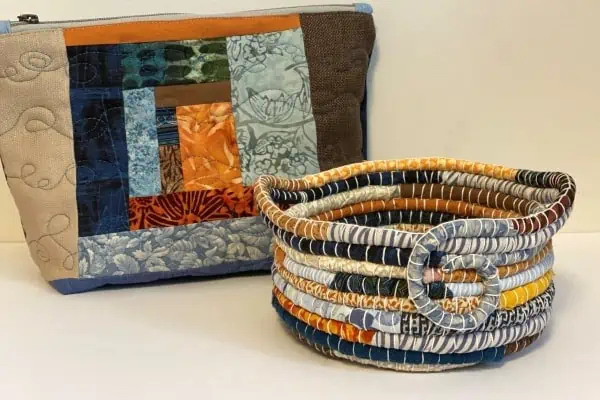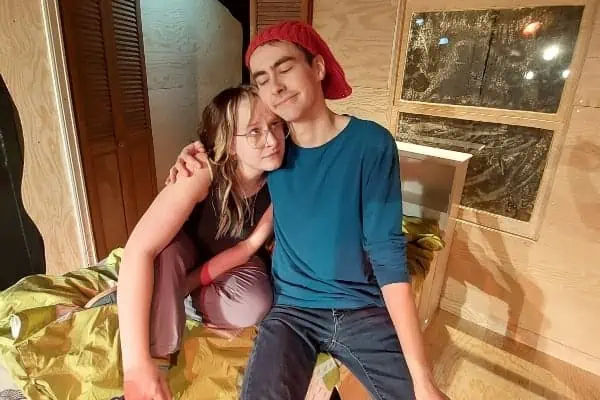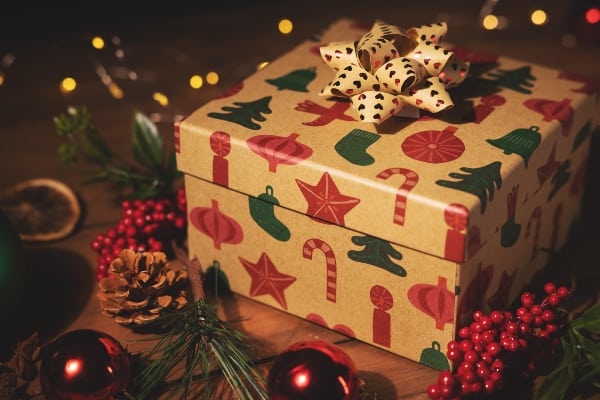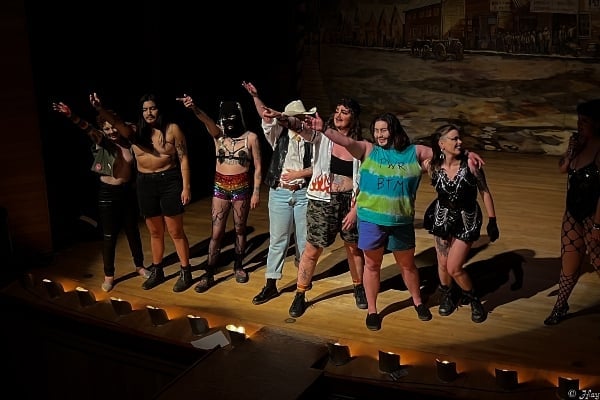Two new exhibitions curated by Jennifer Bowen Allen, of the Dene Nation, opened Sept. 2 at Arts Underground. In the Focus Gallery, a group show called Hands of Time: Bush Women on the Land honours the way that women who live on the land have supported cultural continuity by maintaining their traditional practices.
In the Edge Gallery, Mary Caesar’s solo exhibition, My Healing Journey, tells her stories of residential school.
Hands of Time: Bush Women on the Land
In “Hands of Time” Inland Tlingit artist Heather Callaghan’s mixed media portrait of her mother combines a variety of styles to create a figure with an arresting gaze and a rifle in her hands. Callaghan’s mother was clearly a hunter, and the rifle is the tool of her work, with the head of a moose or caribou supporting her. Her eyes reveal an animé influence, Northwest coast style patterns adorn the antlers and run down one cheek, and a real feather earring flutters from her ear.
Iroquois artist Blair Thorson draws women carrying, cutting and drying fish in his trademark style on topographic maps. In “Pelly River fish cleaning”, a meandering stream and the numeral 70 link up in the form of droplets to suggest the sweat on this hard-working woman’s brow.
Arlene Ness is a Giskaast of the Gitxsan Nation. Her watercolours render in beautifully delicate strokes the strength of women as “Defenders of the Land”, holding drums close to their hearts.
Working in a Han tradition, Dolores Scheffen’s gorgeous beadwork adds another dimension to the images of bush women in this show. Scheffen depicts “Jijuu of Kwinttluth Kakawiteudui (Grandma of Abundant Knowledge)” in beads. Jijuu is depicted working on a hide with a knife, wearing a blue headscarf. Scheffen has used contrasting beads to show the smile lines around her mouth, conveying patience and a merry gentleness.
A wide variety of portraits by Kaska Dena artist Mary Caesar rounds out this group show. Titles include “Bernice working on Moosehide” and “Mom making drymeat”. Associating particular names with the women doing this kind of work, like “Bernice”, or even in relationship, like “Mom”, makes their stories personal and heroic. Naming the women presented i doing this kind of traditional work reverses the problematic pattern of leaving First Nations people unnamed, as is too often the case in Pierre Burton’s writings, for example.
Mary Caesar’s solo show, A Healing Journey, includes a book of poetry and paintings that were published in Germany in both German and English. Caesar tells horrifying truths about residential schools in this book. Her poems channel her outrage.
In the paintings, she uses self-portrait a great deal, sometimes depicting three stories in one canvas. Larger canvases – “Not broken” and “Defiant” – use a more expressionist strategy, face-on. The former shows a grown woman, with her hair long, no longer in the school haircut bob. Her face is bruised, one eye closed with injury, the other bloodshot. But she still holds your gaze with her one good eye. This hangs beside “Defiant”. In this one, the lines of this woman’s neck rise up like a volcano and she bares her teeth.
At the opening, Caesar mentioned she admired both Picasso and Frida Kahlo. Viewing her artwork with these two other artists in mind sheds a different light on her painting style.
These exhibitions were timed to coincide with the Aboriginal Curatorial Collective’s national gathering at the end of September.
My Healing Journey and Hands of Time: Bush Women on the Land continue at Arts Underground until Oct. 1. You can see an earlier, web version of Hands of Time at this link BushWomenontheLand.com.




